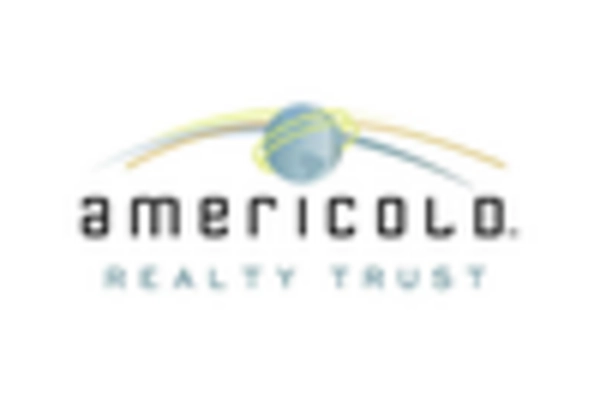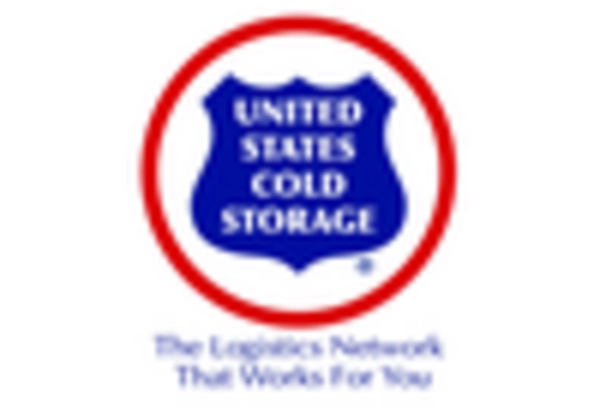Rising Demand for Perishable Goods
The increasing consumption of perishable goods, such as fresh produce, dairy, and meat, is a primary driver for the cold storage market. As consumers become more health-conscious, the demand for fresh and organic products rises. In the US, the market for fresh food is projected to grow at a CAGR of approximately 5.5% through 2026. This trend necessitates enhanced cold storage facilities to maintain product quality and extend shelf life. The cold storage market must adapt to this growing demand by investing in advanced refrigeration technologies and expanding storage capacities. Additionally, the rise in online grocery shopping further fuels the need for efficient cold storage solutions, as retailers strive to meet consumer expectations for freshness and quality.
Expansion of the Pharmaceutical Sector
The pharmaceutical sector's expansion is a crucial driver for the cold storage market. With the increasing production of temperature-sensitive medications and vaccines, the need for specialized cold storage facilities has surged. The US pharmaceutical market is expected to reach approximately $600 billion by 2025, with a significant portion of this growth attributed to biologics and other temperature-sensitive products. The cold storage market must adapt to these changes by providing advanced storage solutions that ensure the integrity of pharmaceutical products. This includes investing in temperature-controlled environments and robust supply chain logistics to maintain the efficacy of medications. As the pharmaceutical sector continues to grow, the demand for reliable cold storage solutions is likely to increase, presenting opportunities for market players.
Growth of the Food and Beverage Industry
The food and beverage industry is a significant driver of the cold storage market. As consumer preferences shift towards convenience and ready-to-eat meals, the demand for processed and packaged foods increases. The US food and beverage market is projected to exceed $1 trillion by 2026, with a substantial portion of this growth attributed to frozen and refrigerated products. The cold storage market plays a vital role in supporting this growth by providing the necessary infrastructure to store and distribute these products effectively. Additionally, the rise of meal kit delivery services and frozen food options further emphasizes the need for efficient cold storage solutions. As the food and beverage industry continues to expand, the cold storage market is likely to benefit from increased demand for reliable storage and distribution capabilities.
Regulatory Compliance and Food Safety Standards
Stringent food safety regulations and compliance requirements significantly impact the cold storage market. The US government enforces strict guidelines to ensure the safe handling and storage of food products. Compliance with the Food Safety Modernization Act (FSMA) mandates that food businesses implement preventive controls, which often necessitate the use of cold storage facilities. The cold storage market must invest in temperature monitoring systems and proper training to adhere to these regulations. Failure to comply can result in severe penalties, including fines and product recalls, which can be detrimental to businesses. As a result, the demand for reliable cold storage solutions continues to grow, as companies seek to mitigate risks associated with food safety and maintain compliance with evolving regulations.
Technological Innovations in Cold Chain Logistics
Technological innovations in cold chain logistics are transforming the cold storage market. The integration of IoT devices, automation, and advanced tracking systems enhances the efficiency and reliability of cold storage operations. In the US, the cold chain logistics market is projected to grow at a CAGR of around 10% through 2027, driven by these technological advancements. The cold storage market is increasingly adopting smart technologies to monitor temperature and humidity levels in real-time, ensuring optimal storage conditions. Furthermore, automation in warehousing and inventory management streamlines operations, reducing labor costs and minimizing human error. As technology continues to evolve, the cold storage market is likely to experience significant growth, driven by the demand for more efficient and reliable cold chain solutions.

















Leave a Comment